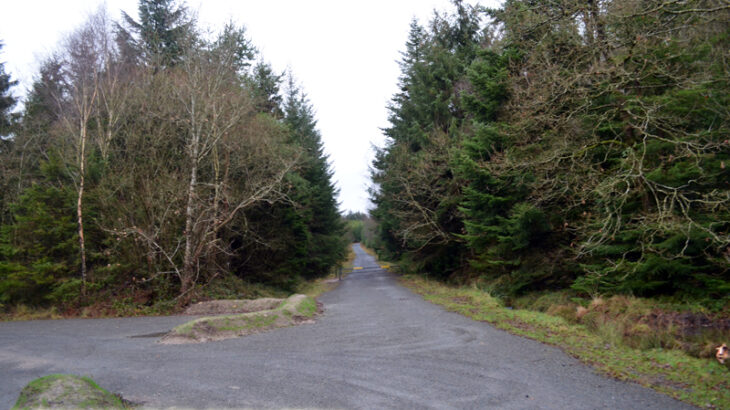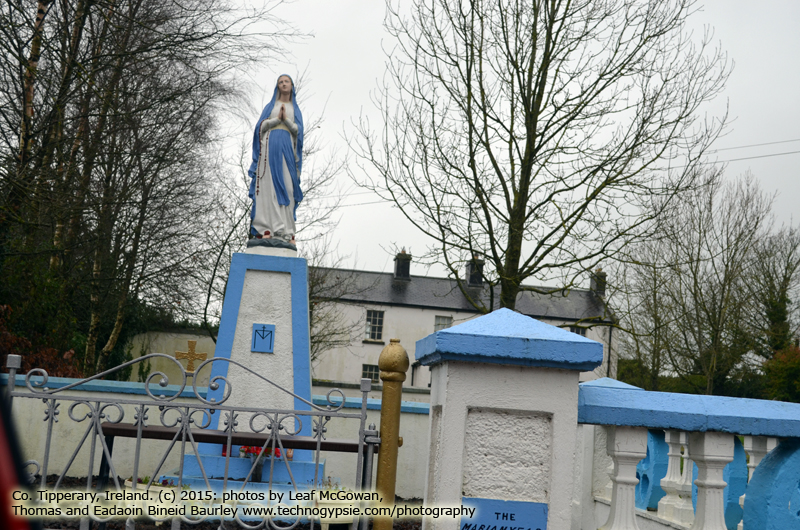
The Holy Well
According to the Folklore Archive Collection at UCD, the Holy Well of Shanrahan in Shanbally Demesne (ethnographic research from W. Flynn, Poundlane, Clogheen age 80) recently changed names from the “Holy Well of Shanbally” to “St. Malachis Well”. An older woman referred to the well as “Tobar upnai Ceasra” and it was known as a well to be visited every Holy Saturday and Easter Sunday. Located in the Shanbally Demesne owned by Ladies Constance Butler and Pole Carew, the well is not well marked on the Tipperary ordinance survey map 87 and is difficult to find but is outside the old church of Shanrahan. The well is circular in shape roughly 5’ in diameter with a depth of approximately 4’ from the top of the enclosing wall.
A plain stone cross was recently added and rests atop the enclosing wall. It is believed that the cross was added by Lord Lismore to mark the site of an ash tree that fell formerly utilized by pilgrims to offer ribbons. The forked yew tree 10 yards from the well is now used for the ribbons and is also studded with nails on which hand rosary beads and scapulars have been left as offerings. Near the well is the residence of an old man named Michelin Cahill who used to act as a guide to the well visitors hoping to retrieve some money from them.
Lore states a woman once brought her child from near Cashel here to be cured of a rheumatic fever attack and seeing how Cahill was getting money from pilgrims, she decided to stay on-site to beg, eventually being driven away by Cahill because his income dissipated after her stunt. He brought out an ash plant, and struck her on the head with it since she refused to leave, wounding her badly. This action is believed to have caused the holy well to dry up.
After the woman left, the water returned again to the well. Visitors perform rounds at the well, a “Pater and Ave” is spoken at three stops near the well, followed by reciting of the rosary while walking around the well. The well was noted for curing weak eye-sight, pains such as caused by rheumatism, and other ills. The old woman Mrs. O’Connor of Garrymore, Clogheen, age 82 told the folklorists her eye-sight was very weak before she visited the well – after rubbing her eyes with the water she was cured. It is said for pains the water is taken away and three gulps a morning is ingested while fasting to cure such illness. The well is still visited by locals on Easter Sunday occasionally but is mostly visited by tourists these days.
Glengarra Forest
Co. Tipperary, Ireland
The “Glengarra Forest” or “Glengarra Woods” is a “Rough Glen” named after “Garra’s Glen” (Garra, a local 2nd century Morna Tribe chieftain) that forms part of the Galtee mountains. It is located in County Tipperary which is named after “Tiobraid Arann” meaning “The Well of Ara” as the place name for the ancient territory in which the well was located. “Tiobraid” is another word for “fountain, well, or spring”. That well, “The Well of Ara”, is now closed up, and was located on Main Street.
Glengarra Wood is located 15 miles southwest/west of Cahir off the M8 motorway and the R639 local road. It consists of approximately 1400 acres located off the Old Red Sandstone southern slopes of the Galtee Mountains. It is considered a coniferous forest with a variety of Sitka Spruce, Scots Pine, Japanese Larch, Douglas Fir, Norway Spruce, Western Hemlock, Yew, Conifers, Old Broadleaf Trees, and Western Red Cedar.
The woods hosts two hiking/walking trails within. The most notable are the Red Loop and the Millennium Green Trail. Glengarra Woods has two main hiking trails established for the public. The first is a 1.2 mile (2 kilometers) loop walk from the car park traversing across the river, through different stands of trees, down to the river, along a forest road, and forest looping back to the car park. The more popular “Millennium Walk” is 4.3 miles long (approx. 7 kilometers) and begins at the car park and loops around the forest. There is another car park .6 miles up the road to the youth hostel.
The acreage was originally belonging to a land grant of Charles I to Sir Richard Everard in 1640. The property was eventually confiscated during the Cromwellian wars because Sir Richard espoused the royalist cause. The lands went to the Lismore family who held them until 1940. The remains of their Shanbally castle can be found just between the roads from Burncourt to Clogheen. Viscount Lismore built a lodge during the 19th century called “Mountain Lodge”. It is now An Oige youth hostel. It is along this main road drive that he planted along with the river and road many native and exotic trees. The Woods today is a Millennium Forest Project site as a government initiative to plant one native tree for every household existing in Ireland. The Glengarra project is 37 acres in size and contains approximately 60,000 trees.
Near the culturally utilized part of the forest is also home to 120 acres of native oak, silver birch, hazel, rowan, wych elm, grey willow, yellow pimpernel, bilberry, lady fern, scots pine, and Alder, and exotic tree species such as laurel, sycamore, conifers and a 140’ tall sequoia Dendron. Known animal inhabitants are badgers, foxes, fallow deer, hares, red squirrels, bats, pygmy shrew, red squirrels, pine marten, pheasants, hawks, kestrels, ravens, herons, and other songbirds.
Nearby is a holy well as part of the Shanbally Demesne – containing a plain stone cross erected by Lord Lismore to mark the site of a fallen ash tree that was used by pilgrims as a place to offer ribbons. The ribbons are now placed on a nearby forked yew tree.
More information:
- http://www.discoverireland.ie/Activities-Adventure/glengarra-wood/8519
- http://www.millenniumforests.com/locationsite_glengarra.html
- http://www.millenniumforests.com/location_archglen.html
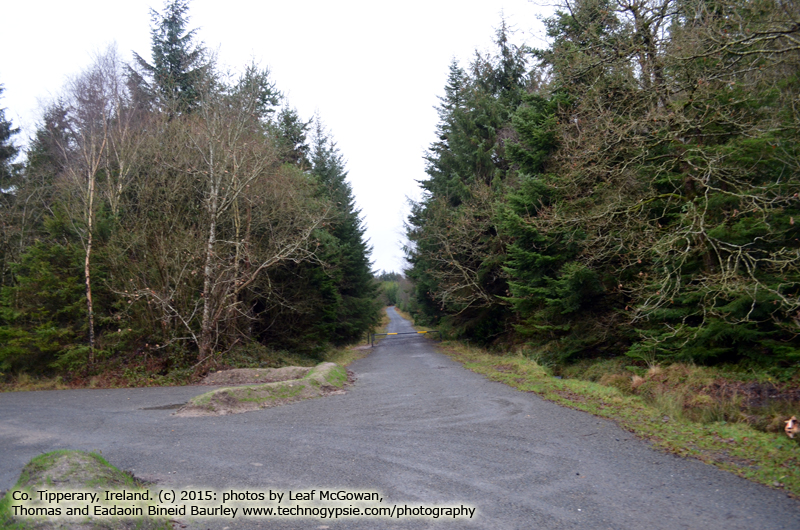
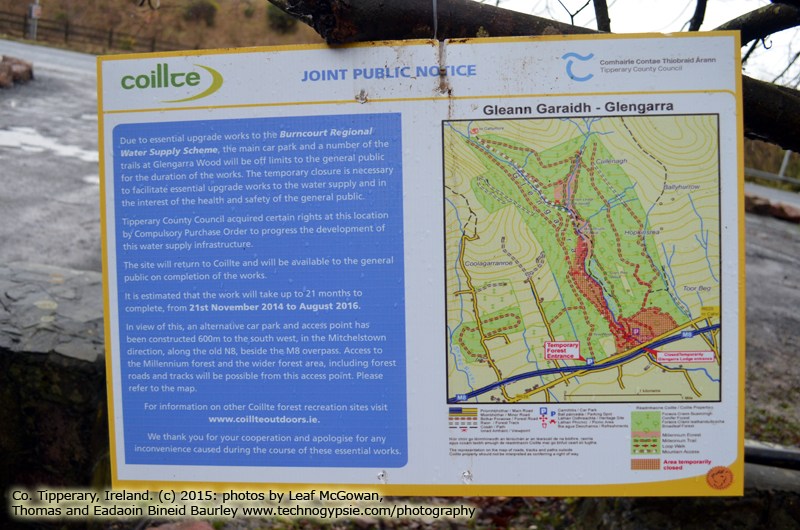
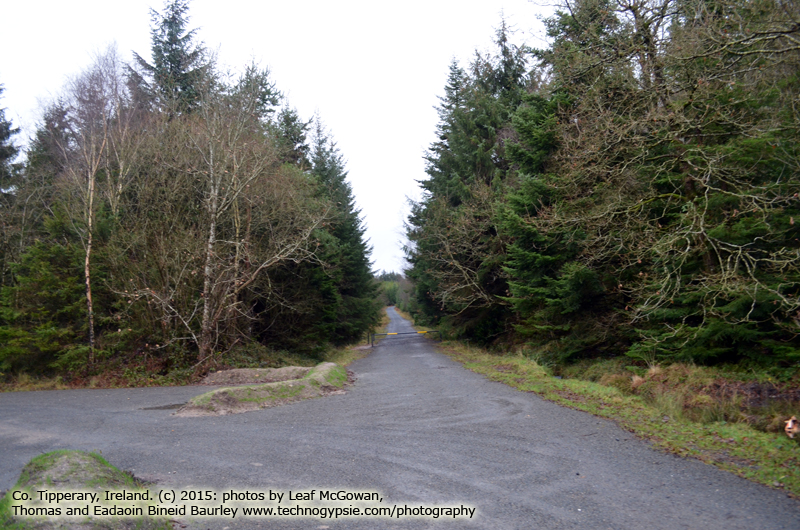
Discover more from The Naiads Well
Subscribe to get the latest posts sent to your email.
